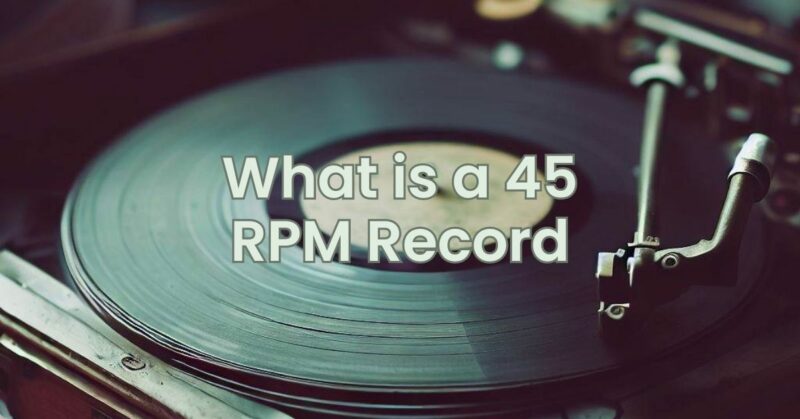If you’re a fan of vinyl records, you’ve likely come across the term “45 RPM” at some point. But what exactly is a 45 RPM record? In this article, we’ll delve into the world of 45s and explore their origins, characteristics, and significance in the music industry. Let’s dive in!
What is a 45 RPM Record?
A 45 RPM record, also known as a 45 single or simply a “45,” refers to a type of vinyl record that plays at a speed of 45 revolutions per minute. It is called a single because it typically contains one song on each side. 45 RPM records are known for their smaller size compared to full-length albums, with a diameter of 7 inches (17.8 cm).
Origins and Historical Significance:
The 45 RPM format was introduced in 1949 by RCA Victor as a successor to the 78 RPM format. The aim was to provide a more convenient and durable option for playing music, as 78s were made of shellac and were more prone to breakage. The introduction of the 45 RPM record revolutionized the music industry and had a profound impact on popular culture.
Features and Characteristics:
- Size and Shape: As mentioned earlier, 45 RPM records have a smaller diameter of 7 inches, making them more compact than full-length albums. They are typically pressed on a vinyl material that is more durable and less prone to breakage than the shellac material used for 78s.
- Playback Speed: The “RPM” in 45 RPM refers to the revolutions per minute at which the record should be played. Turntables need to be set to this speed for accurate playback. Most modern turntables offer adjustable speed settings to accommodate different record types.
- Singles and B-Sides: 45 RPM records are primarily associated with singles, featuring one song on each side. The A-side usually contains the main hit song, while the B-side may feature a lesser-known track or an instrumental version of the A-side. Collectors often seek out rare or promotional B-sides, making them highly sought after.
Popularity and Cultural Impact:
The 45 RPM record format gained immense popularity in the mid-20th century and played a significant role in the rise of rock and roll, pop, and other genres. It allowed artists to release individual songs as standalone hits, contributing to the growth of the music industry and the emergence of the singles charts.
The compact size and affordability of 45 RPM records made them accessible to a wide audience. They became a staple in jukeboxes, record stores, and home entertainment systems, further boosting their popularity. The 45 RPM format continued to dominate the music scene until the advent of cassette tapes, CDs, and digital formats.
The 45 RPM record holds a special place in music history and remains a cherished format among vinyl enthusiasts and collectors. Its compact size, durability, and role in promoting hit singles have left a lasting impact on the music industry. Whether you’re a seasoned collector or a casual listener, exploring the world of 45 RPM records offers a glimpse into the vibrant musical past and a unique way to enjoy your favorite tunes.


